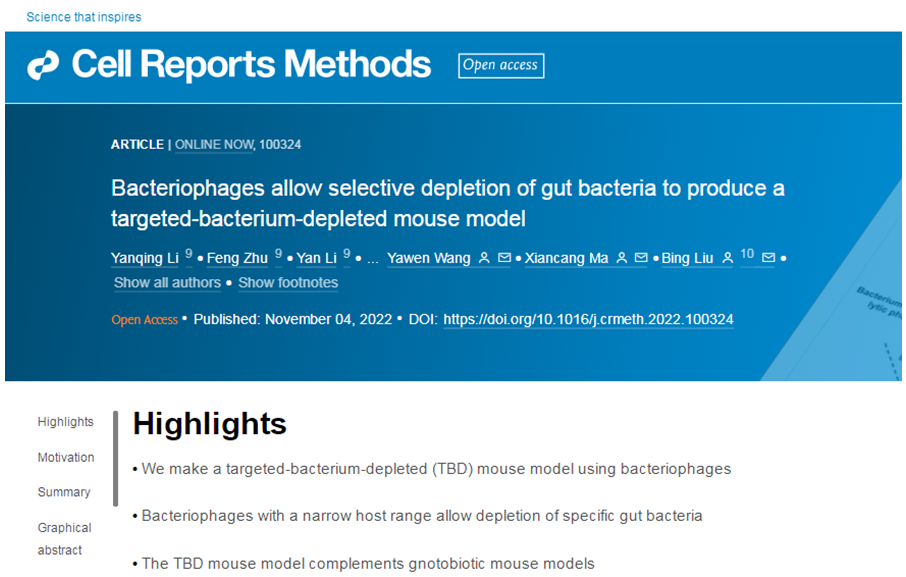At present, the most commonly-used methods to study the gut-brain axis include antibiotic intervention in mouse models and bacterial colonization in gnotobiotic mice. Antibiotic intervention in mouse model is convenient to operate, whereas it fails to targetedly deplete specific bacteria or evaluate the role of single bacterium. However, although target bacterial strains can be colonized in gnotobiotic mice to investigate the function of specific bacteria, gnotobiotic mice have congenital neurodevelopment and immunodeficiency, which limits the study of neurodevelopment and immune-related diseases.

Professor Ma Xiancang's team has been dedicated to resolving the problem, that is, how to deplete the target bacteria to achieve therapeutic effect of mental and neurological diseases in the future? To resolve this issue, multiple teams led by Professor Liu Bing, Professor Ma Xiancang and other scholars from the First Affiliated Hospital of Xi 'an Jiaotong University (XJTU) conducted multidisciplinary cooperation and persistent exploration to innovatively establish the targeted-bacterium-depleted (TBD) mouse model. Studies have shown that TBD model is a powerful tool, resembling CRISPR, a gene knockout technology in cell biology, to knockout target gut bacteria. The animals treated with bacteriophage display near-complete spectrum of gut bacteria except for the depleted bacterium. On November 4, 2022, relevant research results were published online as an Article entitled Bacteriophages allow selective depletion of gut bacteria to produce a targeted-bacterium-depleted (TBD) mouse model in Cell Reports Methods, a journal of Cell.
The team employed Escherichia coli-specific bacteriophage T7 to deplete Escherichia coli in the mouse gut. By tracking 14-day dynamic changes of the quantity of Escherichia coli and gut bacteria after bacteriophage intervention, no significant changes were observed in the total quantity of gut bacteria in each group, whereas the quantity ofEscherichia coliwas immediately declined to approximately 10% of pre-treatment level in the bacteriophage intervention group, confirming the feasibility of establishment method of TBD model. Subsequently, multiple behavioral experiments validated that the Escherichia coli-depleted mice exhibited bravery-like behaviors, while supplement of Escherichia coli could eliminate such behaviors. These findings provide a new method for the establishment of animal models for studying the gut-brain axis, which is expected to become a powerful tool for elucidating gut bacteria-related diseases.
Editor-in-Chief of Cell Reports Methods highly recognized the findings in this study: "Resembling CRISPR, a gene knockout technology in cell biology, TBD modelcan deplete the target gut bacteria. The application process confirms unprecedented discovery made by the team in the study of gut-brain axis and unique advantages of this TBD model".
Cell Reports Methods is an open-access multi-disciplinary journal. Besides Nature Methods, it is the only methodological journal among Cell, Nature and Science (CNS), focusing upon the discovery of novel biological methods.
Article link:https://www.cell.com/cell-reports-methods/fulltext/S2667-2375(22)00214-4